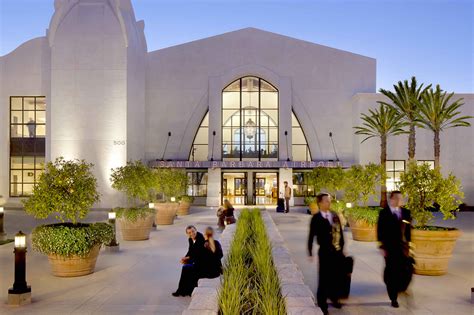Tucked away in the northwest corner of California, the Lost Coast is a rugged and unforgiving stretch of coastline that has captivated the imagination of travelers and adventurers for centuries. This 80-mile stretch of wilderness, bounded by the towns of Ferndale to the north and Rockport to the south, is a place of unspoiled beauty, where the forces of nature have shaped the landscape into a dramatic and ever-changing tapestry.
To understand the allure of the Lost Coast, it’s essential to delve into its complex and often tumultuous history. The region has been home to the Native American tribes of the Wiyot, Yurok, and Tolowa for thousands of years, each with their own distinct culture and traditions. The arrival of European settlers in the 19th century brought significant changes to the area, as the coast became a hub for the timber and fishing industries. However, the rugged terrain and harsh weather conditions made it difficult for these industries to thrive, and the region was eventually abandoned, earning it the nickname “The Lost Coast.”
One of the most striking features of the Lost Coast is its unique geology. The coastline is characterized by a series of narrow, winding roads that cling to the edge of the cliffs, offering breathtaking views of the Pacific Ocean below. The rocks that make up the coastline are a mix of sedimentary, metamorphic, and igneous types, each with its own distinct texture and color. The constant pounding of the waves against the shore has carved out a series of secluded coves, hidden beaches, and dramatic sea stacks, creating a landscape that is both beautiful and treacherous.
For those who are willing to venture off the beaten path, the Lost Coast offers a wealth of opportunities for outdoor adventure. The King Range National Conservation Area, which covers much of the coastline, is a haven for hikers, backpackers, and nature lovers. The area is home to a wide variety of flora and fauna, including giant conifers, wildflowers, and an array of marine life, from sea lions to whales. The Lost Coast Trail, a 25-mile hike that winds its way along the coastline, offers spectacular views of the ocean and the surrounding landscape, as well as the chance to experience the region’s unique ecosystem up close.
In addition to its natural beauty, the Lost Coast is also home to a number of historic and cultural attractions. The town of Ferndale, with its charming Victorian architecture and quaint shops and restaurants, is a great place to start any journey along the Lost Coast. The nearby Ferndale Museum offers a fascinating glimpse into the region’s history and culture, with exhibits on everything from the indigenous peoples of the area to the early days of the timber industry. Further south, the town of Petrolia is home to the Petrolia School, a historic one-room schoolhouse that dates back to the early 20th century.
Despite its many attractions, the Lost Coast remains a relatively undiscovered destination, at least compared to some of California’s more popular tourist spots. This is due in part to the region’s remote location, as well as the challenging weather conditions that can make it difficult to access. However, for those who are willing to make the effort, the Lost Coast offers a unique and unforgettable experience, one that combines stunning natural beauty with a deep sense of history and culture.
In terms of planning a trip to the Lost Coast, there are a number of things to keep in mind. The region is accessible by car, although the roads can be narrow and winding, and the weather conditions can be unpredictable. There are also a number of camping and lodging options available, ranging from primitive backcountry sites to more developed campgrounds and hotels. It’s essential to plan ahead, as the area can be crowded during peak season, and the weather conditions can change quickly.
| Activity | Location | Difficulty Level |
|---|---|---|
| Hiking | King Range National Conservation Area | Challenging |
| Backpacking | Lost Coast Trail | Expert |
| Camping | Mattole Campground | Easy |
For those who are looking for a more leisurely experience, there are also a number of scenic drives and viewpoints along the coast, offering stunning views of the ocean and the surrounding landscape. The Lost Coast is also home to a number of unique and exotic plants and animals, including the rare and endangered coastal tailed frog, which can be found in the area’s many streams and wetlands.
In conclusion, the Lost Coast of California is a place that is sure to captivate and inspire anyone who visits. From its stunning natural beauty to its rich history and culture, this region is a true gem of the American West. Whether you’re looking for adventure, relaxation, or simply a chance to connect with the natural world, the Lost Coast is a destination that is not to be missed.
What is the best time of year to visit the Lost Coast?
+The best time to visit the Lost Coast is from May to October, when the weather is mild and the days are long. However, the region can be visited year-round, and each season has its own unique charm and attractions.
What are some of the most popular activities to do on the Lost Coast?
+Some of the most popular activities on the Lost Coast include hiking, backpacking, camping, and scenic driving. The region is also home to a number of historic and cultural attractions, including the Ferndale Museum and the Petrolia School.
What are some of the unique plants and animals that can be found on the Lost Coast?
+The Lost Coast is home to a number of unique and exotic plants and animals, including the rare and endangered coastal tailed frog, which can be found in the area's many streams and wetlands. The region is also home to a wide variety of flora, including giant conifers, wildflowers, and an array of marine life, from sea lions to whales.
By following these guidelines and tips, you can ensure a safe and enjoyable trip to the Lost Coast, and make the most of your time in this incredible region. Whether you’re an outdoor enthusiast, a history buff, or simply looking for a unique and unforgettable experience, the Lost Coast is a destination that is sure to leave a lasting impression.

